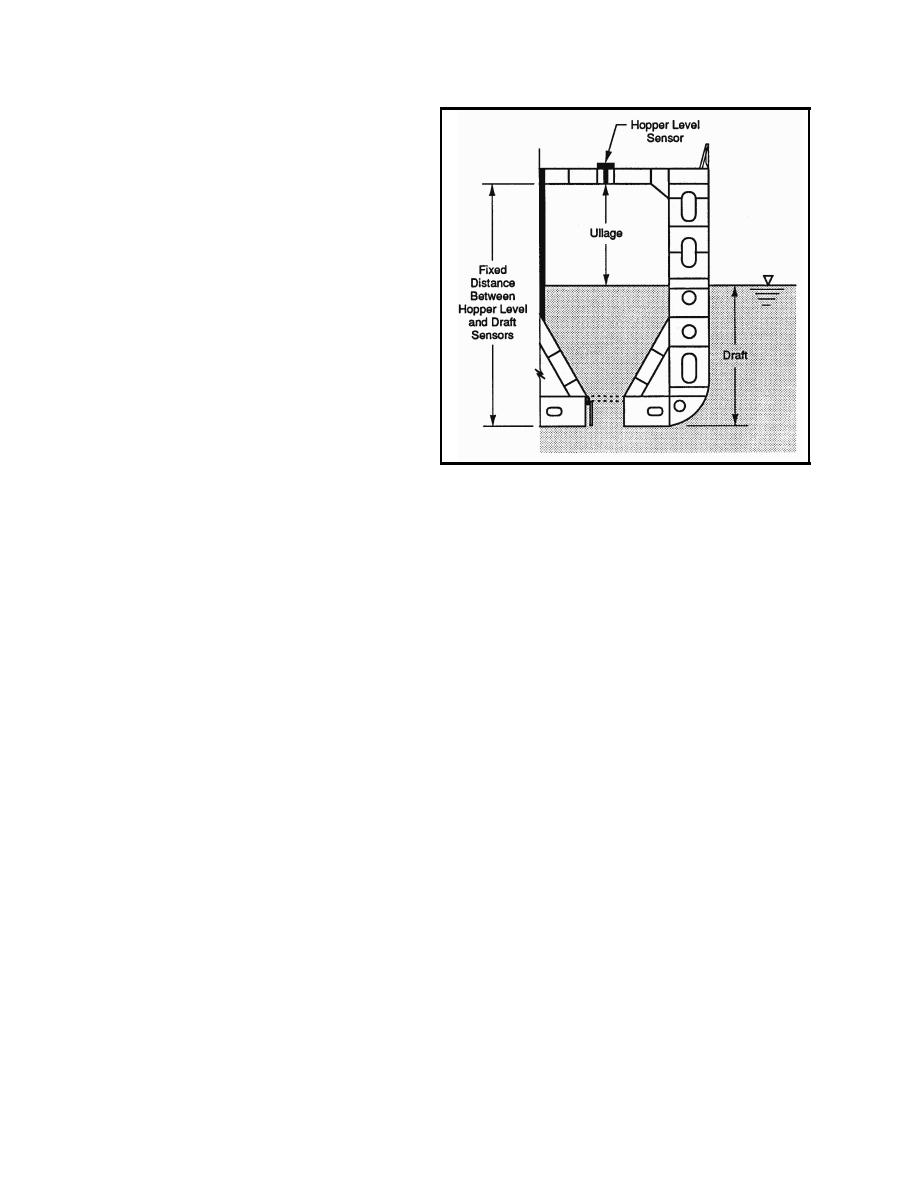 |
||
|
|
||
|
Page Title:
Figure 11. Fixed distance between draft and hopper level sensors |
||
| |||||||||||||||
|
|
 ERDC TN-DOER-I2
July 2000
Water Level Test. The fixed distance be-
tween the draft and ullage sensors allows a
quality assurance test to be conducted on
hopper dredges with bottom dump doors.
With the bottom dump doors open, the water
level inside the hopper will equal that of the
water surrounding the vessel. As shown in
Figure 11, addition of the draft and ullage
measurements should equal the fixed dis-
tance between the draft and hopper level
sensors. Although the Columbus does not
have dump doors, its discharge system al-
lows the hopper water elevation to equalize
with the surrounding water in the same man-
ner. On the Columbus, these ullage and
draft sensors have agreed within 30.5 mm
(0.1 ft). Results on the McFarland as well as
the Columbus are currently being analyzed Figure 11. Fixed distance between draft and hopper
to determine the effect of sensor geometries
level sensors
on relative accuracies.
ONGOING INVESTIGATIONS
Dry Sediment Density and Water Density. Sediment and water samples in the Mobile
Channel are currently being collected and analyzed to generate a database of specific density
variability for solids and in situ water. As this database is made more complete in conjunction with
more TDS measurements, analyses will be conducted to investigate such TDS issues as when and
how (e.g., time averaging) is the "best" way to measure the hopper load TDS value and the conditions
under which TDS is most justified for a dredging project.
System Performance. Sensor and TDS system performance on the McFarland will be
monitored during the course of regular dredging projects, and data collected will be analyzed with
regard to accuracy and precision and quality assurance aspects. Nearly a year of TDS data have
been collected on the Columbus and the contract-specified 90 percent data return has been exceeded.
The ullage sensors have had several failures, but they have been repaired within the 48-hr time
window specified in the contract.
CONTRACT SPECIFICATIONS: The Mobile District rental contract for the dredge Columbus
includes specifications that aid in implementing TDS and the SI system. For instance, the contractor
must develop a Dredge Plant Instrumentation Plan that shows how sensor data will be gathered,
quality control will be performed on those data, and calibration and repair of sensors/data reporting
equipment will be conducted when they fail. A standard interface is specified for connecting sensor
data and computed dredge-specific data to the ship server. The contractor is to keep a log of sensor
problems and repairs. Recalibration can be directed at any time during contract execution as deemed
necessary. No recalibration or adjustments to the calibration controls are to be performed in the
absence of the Authorized Representative of the Contracting Officer without prior written approval.
12
|
|
Privacy Statement - Press Release - Copyright Information. - Contact Us - Support Integrated Publishing |